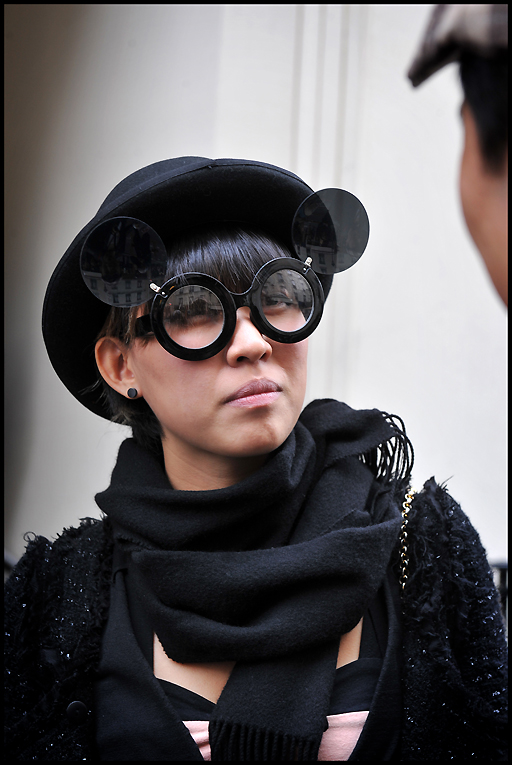 The Three Mesquiteers
The Three Mesquiteers were created, let us not forget, as a box office draw to help the fledgling Republic Pictures off the ground. It was stocked with popular actors for that reason, men like Robert Livingston who could independently draw a crowd. But now, four years into Republic’s existence, they were experiencing unprecedented success, putting out more and better movies than their
Three Mesquiteers series.
As the most popular, first-billed member of the
Mesquiteers, Robert Livingston could be better used elsewhere in Republic’s arsenal. Thus in 1938, he was taken off of the
Mesquiteer roster, to become a solo star as the Lone Ranger in
The Lone Ranger Rides Again – a serial, but not a series. His Mesquiteer character of Stony Brooke would remain, but be recast in an advertizing blitz that anticipates what the James Bond movies would someday do. The key in publically recasting a popular role is picking an actor who will maintain the character’s central facets, but bring his own unique spin to the table. Given Stony’s traits, just about any western actor of the 30s could be chosen. Republic went with the best possible choice.
They went with Marion Morrison.
I guess I should use the actor’s stage name instead…
They went with
JOHN WAYNE.

The Duke is one of the greatest icons in film history, representing the western notions of masculinity and heroism and oversized man-chests in the same way that Clint Eastwood would later come to symbolize things we still care about. He was not always a huge name, and the whole of the 30s saw John Wayne floundering in the same B-western morass the Mesquiteers were arguably at the top of. He served for Poverty Row studios such as Mascot and Monogram, a real snake pit of aesthetic doom. Around 1936, Wayne joined up with Republic to make some non-
Mesquiteer westerns. Then he left briefly to try actual Acting over at Universal, which just seems silly. Realizing the Western was Wayne’s home, he returned to Republic in ’38, leading to his casting in
The Three Mesquiteers, and thus the creation of –
THE JOHN WAYNE ERAMesquiteer movies were generally made in 8-picture cycles – hence the average 8 movies a year. John Wayne stuck around for one of these cycles, his name prominently huger than continuing costars Ray Corrigan and Max Terhune. This prominence indicates Wayne’s importance as a star. Consider his next movie following his
Mesquiteering was
Stagecoach – the film which raised the western
as an entire genre to the A-level, making Johns Wayne and Ford the greatest name in the classical Hollywood western. This is nothing to sneeze at.
With the dissolution of the favored
Mesquiteer menagerie of Livingston, Corrigan and Terhune, present day access to these movies dries up considerably. Without waiting for TCM to play some of these later entries at 3 A.M. every other year, I am forced to present what little I can for the next eight films:
Pals of the Saddle (1938) – The Mesquiteers take on the spy genre, presumably in some contemporary setting, as Stony (Wayne) takes the place of a dead spy to aid, what else?, a beautiful girl. Then it’s a simple matter of besting a smuggling ring which is transporting monium (which sounds like another Poverty Row studio) down to Mexico. As in practically every entry, Stony is framed for murder.
Overland Stage Riders (1938) – With renegades robbing stagecoach gold shipments in the Old West, the Mesquiteers make an astounding realization – Hey, it’s nearly the middle of the 20th century! Thus they decide to replace stagecoach with
modern aircraft, just like Afghanistan. But the renegades simply rob the airplane instead, I imagine in a stunt sequence where they leap onto it from horseback. The plane crashes, the gold is strewn, and we have something resembling
Broken Arrow (
the John Woo movie,
not the western).
Red River Range (1938) – The Mesquiteers battle cattle rustlers…again. This time, they (the rustlers) are using portable freezers and slaughterhouses (!). Stony poses as an outlaw to infiltrate the rustling gang, while simultaneously an outlaw poses as a lawman. Yeah, it’s
The Departed, only with John Wayne. Actually, that sounds sorta awesome!
The Night Riders (1939) – It seems the baddie’s a land owner this time, ‘cause there’s only so many villain types the Mesquiteers face. And their solution this time is...to become the Night Riders. I dunno, it sounds a little KKK to me!
Three Texas Steers (1939) – No, it’s not a gay porno, it’s another invocation of the circus (after
Come On, Cowboys!, which
also sounds like a gay porno). Some swindlers want a ranch, but a pretty woman also wants the ranch. Therefore, Stony helps the pretty woman. Also, she owns the circus.
Wyoming Outlaw (1939) – It’s Mesquiteers versus – sigh! – cattle rustlers. The only synopsis I can find suggests there is some kind of moral grey area in this film – that must be a mistake.
New Frontier (1939) – Ranchers are forced off of their land by the construction of yet another of FDR’s damn dams, so the Mesquiteers direct them to new ranch land. It turns out this land is worthless –
whoopsie! What’d they do, simply rework the script from
Gunsmoke Ranch?!
Then there’s
Santa Fe Stampede, which was actually the third
Mesquiteer movie John Wayne appeared in. It is also the only one from his era which I have access to. It’ll hafta stand for all eight movies, so here’s hopin’ it’s a good one…

The most interesting thing about
Santa Fe Stampede is, of course, the Duke, John Wayne. He looks incredibly young and thin here, and shows only an inkling of the A-lister charisma he would one day exude. Really, seeing this without knowing his future career, one cannot see
extreme talent, merely a competency at the B-western schtick required of him. Bless John Ford for seeing otherwise. For those who are familiar with what would come, though, Wayne’s cadence seems familiar, that distinctive, almost Shatnerian halting diction best suited to the word “pilgrim.” There is a certain gravitas and heroism nascent in Wayne, a silent strength that greatly increases the moral power of the tale.
It is clear the strong elements of Wayne’s performance as Stony Brooke are entirely
Wayne’s doing; as written, Stony is as blandly romantic and do-goody as ever – it took until the 50s for western heroes to gain ambivalence. All in all, this is a tried-and-true, tiresome
Three Mesquiteers entry, of little interest to a series fan in-and-of itself. Let us see how that is…
First up, who is the victimized, spineless twerp the Mesquiteers shall be defending today? Why, it’s Dave Carson (William Farnum), a miner who’s just happened upon the gold load that shall make his fortune. The only problem is, he never bothered to stake his claim legally, as he was too busy simply mining it. Uh-oh, Spaghetti-Os! We’re meant to sympathize with the man over this foolishness, which has shades of the current housing crisis – You mean I had to
pay for my own house?! Good thing the Mesquiteers are here to “help.”

Rather than simply go on down to Capital City (they actually call it that), the Mesquiteers decide the way to protect Carson’s claim is to get a petition signed – a petition basically saying…damned if I know, actually. It has something to do with protecting Carson against the predictable bad men hovering o’er his ore: Evil Mayor Byron (LeRoy Mason) and his hench-goon Sheriff Tom (Dick Rush –
tee hee!). The Mayor, meanwhile, isn’t simply using his mayorly power to just swoop in and snatch up Carson’s claim whilst he can…nah, he’s gone the roundabout route routing some gold out, to test in some “labs” first to determine its value. As in roughly 100% of the
Mesquiteer plots, the courses of action taken (by both the heroes and villains) make about 0% sense almost immediately.

As it happens, though, Carson’s petition is prepared, and he sets out with Stony to deliver it to Placerburg – petitions go to Placerburg, claims to Capitol City. Off they ride on Carson’s stagecoach with Carson’s young daughter Julie, while the other Mesquiteers (Tucson and Lullaby) just diddle around the mine in order to “guard it.”
Oh right, Carson has kids! Gotta work through that! So there’s the aforementioned Julie, who is rather the odd duck out. See, per formula, the old man victim usually has two kids: a young boy so the film’s juvenile target audience can have an identification figure, and an older daughter so Stony can have someone to break age of consent laws with (romance). Today, those roles are filled by Billy and Nancy (Martin Spellman and June Martel). So what’s little Julie’s purpose in this movie anyway?
To die!
Yup, we need our sacrificial lambs to mark out the Mayor and cronies as villains – especially since the old black hat/white hat dichotomy is failing us today. So Stony, acting as protection to Dave and Julie on their stagecoach, randomly decides to
ride off on his own to go stake that claim at Capitol City anyway. This silly, spur-of-the-moment decision allows the Mayor’s foot soldiers to close in and
murder Dave and Julie. Nice one, Mesquiteers! Had you not interfered, Dave would simply be out a potential fortune. Instead, he’s dead,
and his beloved daughter! You kinda messed things up here, I have to say.
Stony is arrested for murder. The only reason the Mayor doesn’t have him immediately executed, Texas style, is because Stony’s pal Marshal Jim Wood (Tom London) has come in from Placerburg to ensure Stony gets one of them there fair trials. There is a little suspenseful horse riding which takes place here, because
Santa Fe Stampede has been somewhat lacking for usual western action – sadly, this affords us plentiful views of Palmdale’s new power lines. But in the end, Stony is safely squared away in Wood’s hands.

Learning his father and sister have been killed, Billy angrily confronts Stony in the center of town. Stony kneels beside Billy, giving him his word as to his innocence. John Wayne’ own gravitas makes this work – a mere look in his eyes is enough to convince Billy. Wayne-wise, this is the strongest moment of
Santa Fe Stampede.
The time has come for Wood to take action. Wait, why not Tucson and Lullaby?! Who knows, they’re mostly just following Wood’s orders now. And those orders are to find two men, Cary and Frank, who can act as witnesses on Stony’s behalf. (They signed Stony’s dinky little petition in such a context they can vouch for him – a whole 5 minutes I didn’t recap that seems mightily contrived and obvious.) The only problem is that the Mayor
also knows about Cary and Frank, and sends his minions off to “take care” of them. That’s right, these guys are killed too, because the Mayor’s little scheme to legally seize Carson’s gold is growing wildly out of hand. (
Mesquiteer villains cannot do
anything without murder – Going on a grocery run? Murder someone! Giving alms to the poor? Murder someone!)

Hedging his mayoral bet, the Mayor spreads anti-Stony gossip throughout town. Thus a Simpsoniam lynch mob forms, the closest we come to a titular stampede. The townsfolk amass before the prison, dead set to stone Stony dead, while Wood stonewalls this mass of massacre-minded maniacs. It would almost be worth producing a screen cab of the mob, only John Wayne doesn’t appear in it.
This means Tucson and Lullaby alone reach the shack of Carl and Frank. In a very uncharacteristic moment, the two nameless goons awaiting them easily ambush our heroes. And while Carl and Frank somehow merited instant death (
apropos of nothing), such treatment is never even
considered for the marquee stars. So they’re just tied up instead.
Billy grows worried, witnessing the Tea Party-esque assembly of torch-wielding peasants. Using his magical plot-sensing powers, he races on his horse to go rescue Tucson and Lullaby. Ride, Billy, ride! So he unties the heroes, they punch some mook faces, and…that’s really the end of their involvement.
Nancy (Billy’s still-living sister) goes along to free Stony, only…she’s knocked unconscious by an errant rock, because far be it from a 1938 movie to let a
woman save the day. Instead, the prison catches on fire, and it’s up to Stony to pry the keys from Nancy’s hands, and carry her to safety from the burning building. (Hilariously, the Mayor
et al gleefully cackle as their own town burns to the ground, because at least “that’ll be an end to that drasted Stony” whom they didn’t even
care about one day earlier…Gold? What gold?)

John Wayne is now set loose for pretty much the first time in this movie. That’s it for the villains, because
no one stands a chance against the Duke’s mighty authority. Our hero Stony simply has to hold
a single pistol at the ten or so baddies, which prompts them
all to right out confess to their misdeeds. That was easy, but really, would
YOU remain stone-faced against the mighty Wayne?
As a
Mesquiteers movie,
Santa Fe Stampede is pretty generic, and not even a particularly good source of the awesome stunt work one can sometimes find. So while the
film may disappoint through mediocrity, John Wayne fares quite well. I’ll maintain that his powers are not wholly evident here, but there’s enough of a sparkle of the Wayne to come to make it all worthwhile – especially in his scene with Billy. It’s mostly of historical interest, but that’s something.
Happy trails, John Wayne…
Related posts:• No. 1
The Three Mesquiteers (1936)
• No. 3
Roarin’ Lead (1936)
• No. 4
Riders of the Whistling Skull (1937)
• No. 5
Hit the Saddle (1937)
• No. 6
Gunsmoke Ranch (1937)
• No. 7
Come On, Cowboys! (1937)
• No. 8
Range Defenders (1937)
• No. 9
Heart of the Rockies (1937)
• No. 10
The Trigger Trio (1937)
• No. 13
Call of the Mesquiteers (1938)
• No. 14
Outlaws of Sonora (1938)
•
Nos. 29 – 38 (1940 – 1941)
• No. 35
Prairie Pioneers (1941)
•
Nos. 39 – 51 (1941 – 1943)











































